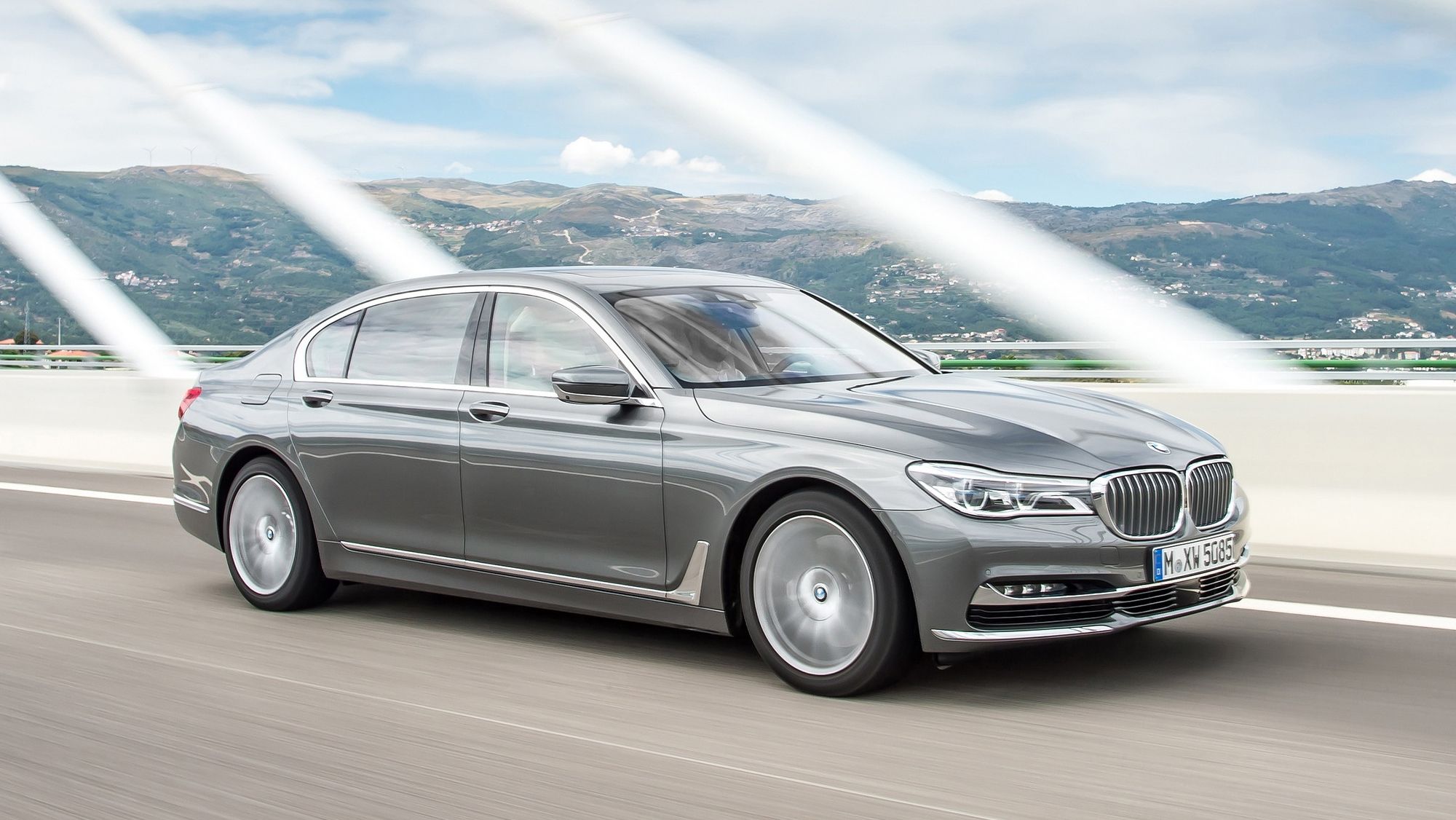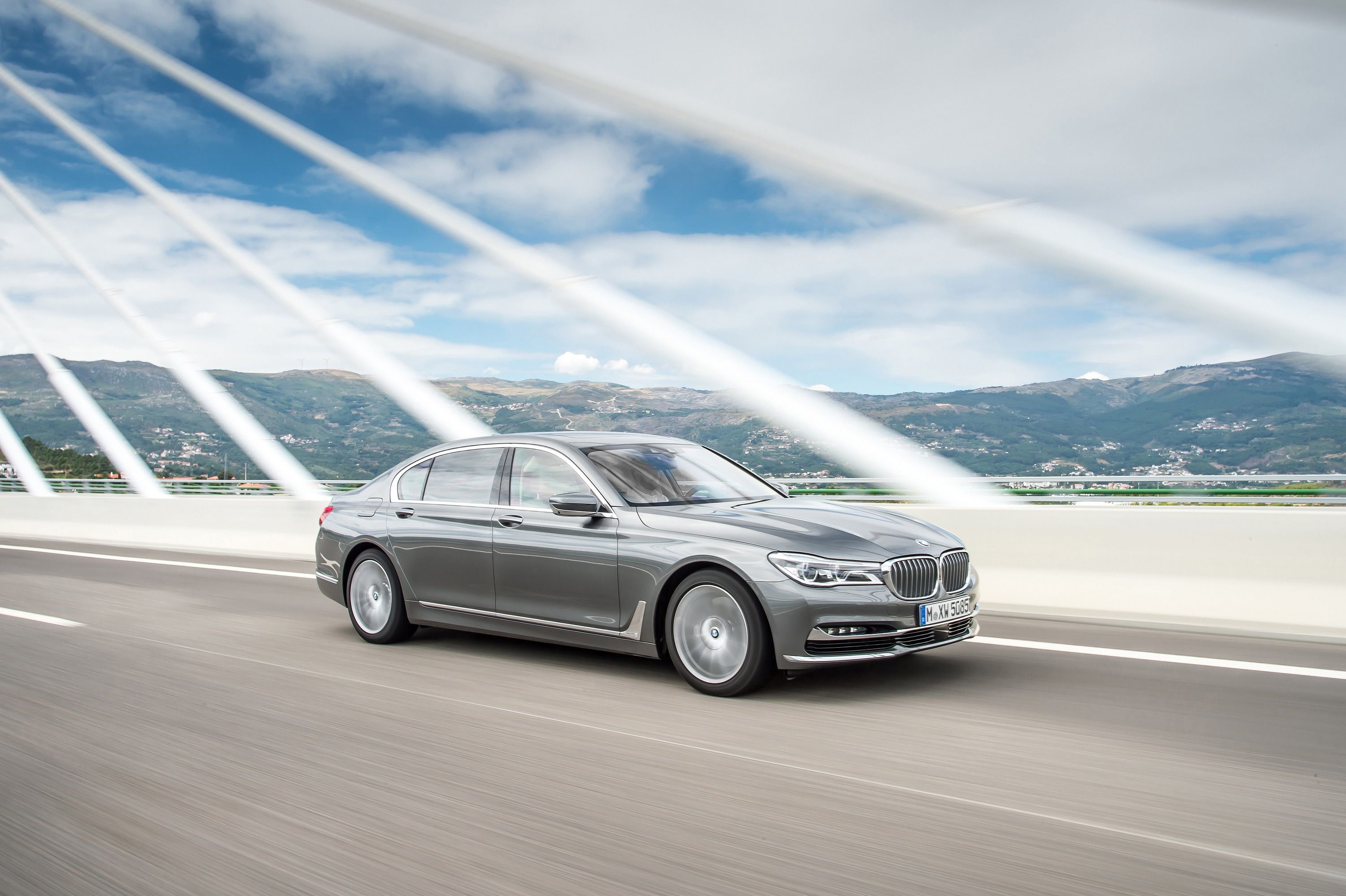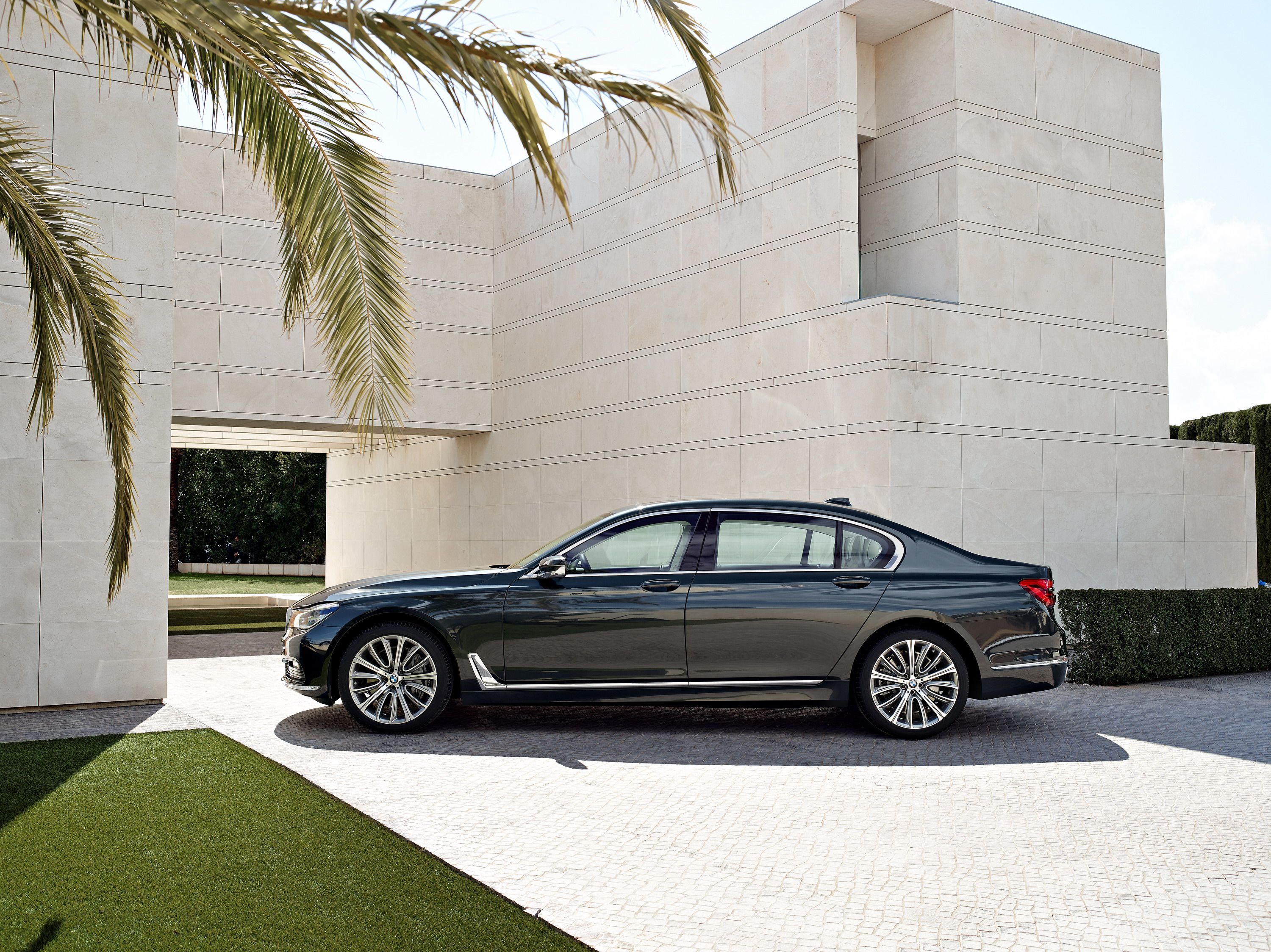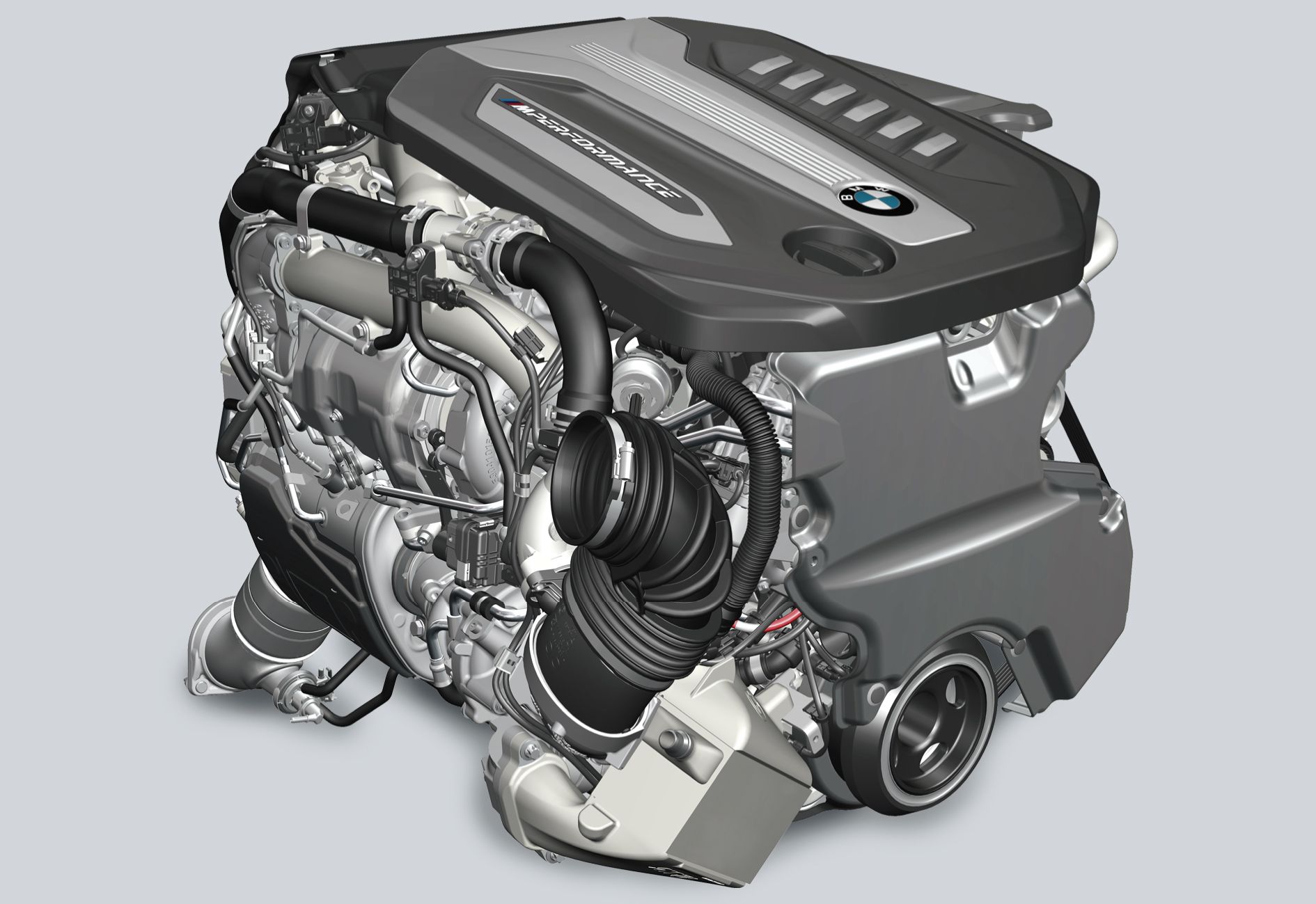Up until now, getting a diesel-powered BMW 7 Series->ke323 meant you had to go for 730 or 740 model variants, but now BMW->ke178 is adding a diesel->ke1917 powertrain to the 750 with the BMW 750d xDrive and BMW 750Ld xDrive. So not only do you have the choice between the normal and long-wheelbase 750, but you also get a brand new diesel engine that BMW claims to be the “world’s most powerful six-cylinder diesel engine.”
Back in July of last year, it was announced that BMW was considering a Quad-Turbo Diesel Engine, then just a few weeks ago, BMW unveiled its newest piece of engine evolution that sure did feature a total of four turbochargers. According to BMW, the new quad-turbo diesel engine offers a five-percent increase in horsepower and an 11-percent reduction in emissions output. We’ve known for a while that the engines first tour of service would be in the 750, but we didn’t know it would happen so quickly.
The 7 Series entered its sixth generation for the 2016 model year and was based on BMW’s modular CLAR platform – a platform that was focused on weight reduction and structural strength. As such, the car was redesigned from the ground up with a new Carbon Core passenger cell, a 50/50 weight distribution, and a whole new, sporty look. Here in the U.S. we only get gasoline-powered versions of the 740i and 750i, and sadly, the new 750d and 750Ld aren’t slated to cross the Atlantic either. Be that as it may, we decided to take a closer look at it anyway, so keep reading to learn more about the new 750Ld and 750d models.
Continue reading to learn more about the BMW 750d xDrive and BMW 750Ld xDrive.
2017 BMW 750d xDrive and BMW 750Ld xDrive
- Make: Array
- Model: 2017 BMW 750d xDrive and BMW 750Ld xDrive
- Engine/Motor: inline-6
- Horsepower: 400
- Torque: 560
- [do not use] Vehicle Model: Array
Exterior
When Bimmer “redesigned” the 7 Series, the exterior appearance didn’t really change much. The look of the 7 Series was essentially evolved to include BMW’s latest design language. Highlights of the new generation include the same kidney grille, a more aggressive front fascia wider and narrower headlights, sportier taillights, and integrated exhaust outlets in the rear. The only noticeable difference on the outside of the 750d models is the trim accenting along the side and across the front fascia is silver in color instead of chrome. Otherwise, the car shares the same appearance with the rest of its 7 Series stablemates, and as always the “Ld” model is just a bit longer than the standard 750d.
Interior
On the inside, the 7 Series looks to be about as comfortable to ride in as you can get. The leather seats are soft and inviting, while the rear is designed for those who like to be driven. You’ll notice that the car comes standard with a panoramic roof but can be equipped with a Panoramic Sky Lounge LED Roof as an option. The technology inside is also better than ever. The new 7 Series sports the iDrive 5.0 infotainment system with a touch display and gesture control. The latter of which uses sensors to detect certain hand gestures to complete tasks like adjusting radio volume, accepting and rejecting telephone calls, operating the navigation system, and even turning off the screen. There is also a seven-inch, removable tablet that can be used by rear passengers to control the audio system and HVAC system.
Both the 750d and 750Ld will include all of these features along with that all-new quad-turbo diesel under the hood. As always the interior can be customized as much as you want with things like the Executive Lounge Seating Package, the Sky Lounge LED Roof, and a number of other options through BMW’s Individual division.
Drivetrain
This is where the 750d and 750Ld really stand out from the rest of the 7 Series lineup. That new quad-turbo diesel engine hiding under the hood of the two 750s is pretty amazing. That 3.0-liter, six-cylinder engine manages to deliver a total output of 400 horsepower and 560 pound-feet of torque, which is enough to take the 750d to 62 mph in 4.6 seconds and the 750Ld to the same benchmark in 4.7 seconds. Furthermore, it’s able to achieve a combined fuel economy of 5.7- to 5.9-liter per 100 km, or between 47.9 and 49.6 mpg on the imperial scale.
This kind of fuel economy and performance is made possible by multi-stage turbocharging and an upgraded common-rail direct injection system. As always, the cylinder heads and engine block are manufactured using a high-pressure compression process, while a hot isostatic pressing process is used to ensure the aluminum castings can hold up to the extreme combustion pressures of the engine. The head gasket is now five layers think and the cylinder bores have a twin-wire, arc-sprayed coating. The pistons are made from aluminum and silicon alloy with remelted bowl rims and bronze lines inside the pin eyes. The fuel injection system has been upgraded to withstand fuel pressure higher than 2,500 bar – a way to increase the precision and automization of fuel, which essentially means less fuel is wasted.
The most important part is how the turbocharger system works. To make this next-gen engine, BMW had to add a fourth turbocharger to the mix. The high-pressure turbochargers are built into the same housing with variable turbine geometry. The larger, low-pressure turbocharger that was used in the past has been replaced by two smaller units that are able to respond faster. The result is almost zero turbo lag on takeoff and excessively quick response when the accelerator is mashed at higher speeds.
The way it works is, the two low-pressure turbos and one high-pressure turbo are in use at all times. Under hard acceleration from idle, the low-pressure turbos are bypassed. This allows turbo pressure to build up faster than ever, with the second high-pressure turbo kicking in at 2,500 rpm. Both low-pressure and high-pressure turbos now feature exhaust gas recirculation, which increases not only turbo performance but the performance of the engine itself. All told, this is the next evolution of the diesel engine, but Bimmer is keeping it on that side of the world for now, so don’t expect to see it in the U.S. anytime soon.
Prices
BMW has yet to release pricing for the 750d xDrive or the 750Ld xDrive. The 750i xDrive and 750Li xDrive start out at €109,900 and €115,100, respectively. With that said, you can expect a similar price point when the 750d xDrive and 750Ld xDrive go on sale in July of this year. That translates to $123,964 and $129,884 at current exchange rates.
Competition
Mercedes S-Class
Mercedes keeps its diesel-powered S-Class out of American hands just like Bimmer does with its diesel-powered variants of the 7 Series. For competition against the 750d or 750Ld, you’ll need to look to the Mercedes S350 BlueTec. It is powered by a 3.0-liter diesel engine that delivers 258 horsepower and 457 pound-feet of torque. That’s a deficit of 142 horsepower and 103 pound-feet in comparison to the 7 Series, but this generation of the S-Class is also a couple of years old now. On top of that, the deficit in power comes at a cheaper price as well. At the time of this writing, the standard length 350 BlueTec starts out at €82,229, while the long-wheelbase model starts out at €87,762. That converts to $92,689 and $98,926 at current conversion rates.
Read our full review on the Mercedes S-Class here.
Conclusion
It was only a matter of time before Mercedes jumped up to using four turbos on its diesel engines, but I’m impressed to see that the manufacturer took the time to do it right. Instead of just throwing a fourth turbo in the mix, Merc redesigned the entire turbo system with the two high-pressure turbochargers built into the same housing and two low-pressure turbochargers instead of a single large unit. On top of that, Mercedes upgraded the injection system and strengthened the head gaskets as well. In the end, it developed a stronger, more powerful, and more efficient diesel powertrain. It’s no surprise the Mercedes is debuting this upgraded diesel engine in the 750, but with any luck, it will trickle down the lineup in coming years.







